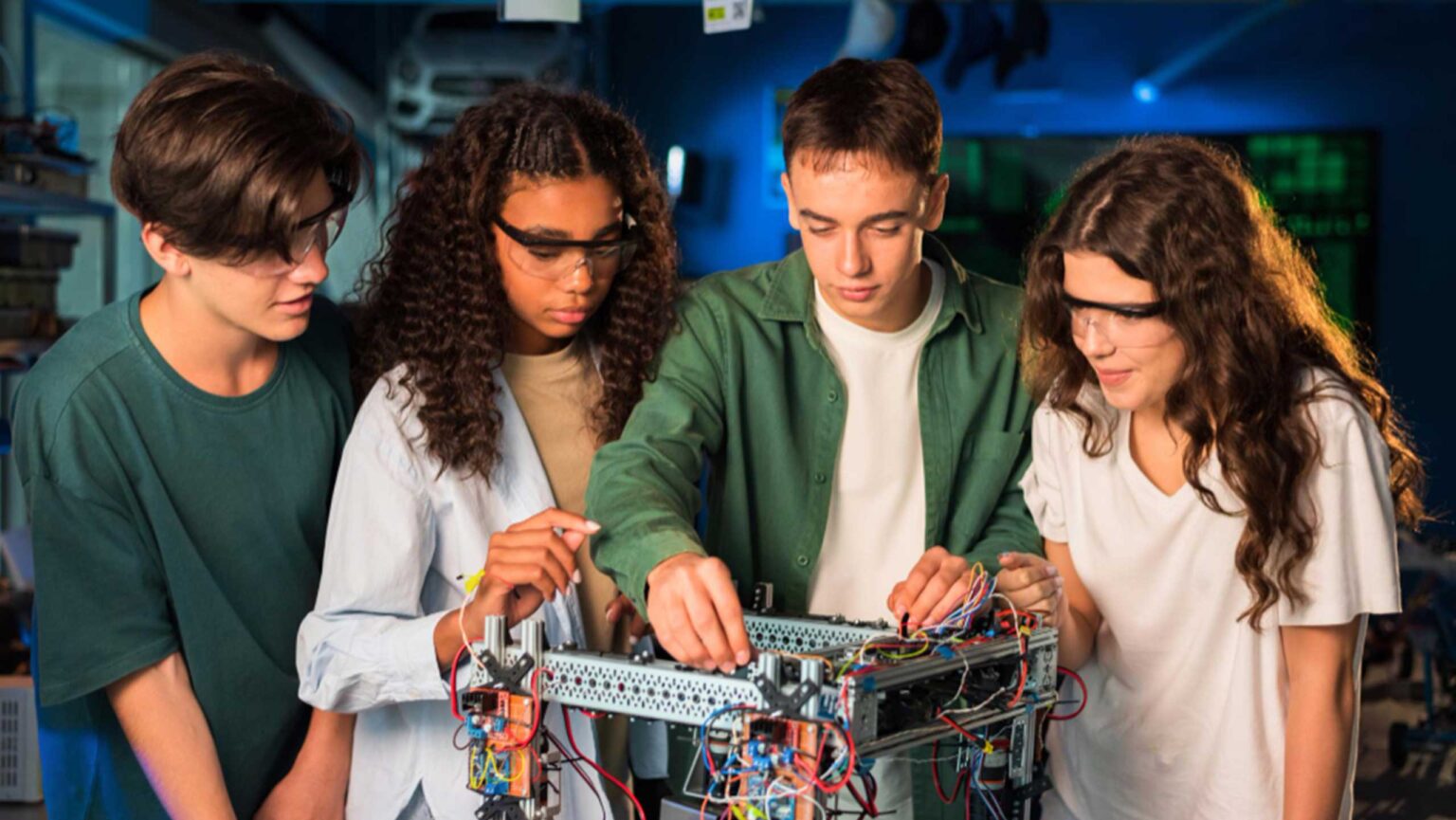Are you a high school student looking for an exciting way to get into the world of engineering?
From building bridges out of popsicle sticks to designing simple robots, there are countless engineering projects for high school that can spark your creativity and give you a taste of what engineers do.
Today, we’ll explore some fun and challenging engineering projects that are perfect for high school students.
Let’s bring your ideas to life:
Table of Contents
Best Engineering Projects For High School Students
Are you in search of some cool engineering projects for your high school? Here are a couple of them:
1. Bottle Rocket
Building a bottle rocket is a fun engineering project for high schoolers to learn about physics and pressure.
You’ll need a plastic bottle, some water, a cork, and a bicycle pump. Fill the bottle partially with water and seal it with the cork. Attach the pump to the cork and start pumping air into the bottle.
As the pressure builds up, the bottle will shoot up like a rocket when the cork pops off.
This project teaches you about pressure, propulsion, and the principles of aerodynamics.
2. Bridge Building
Constructing a bridge using popsicle sticks or toothpicks and glue can be both challenging and educational.
You can design different types of bridges, like truss or beam bridges, and then test their strength by adding weight until they break.
This helps you understand the importance of design and materials in engineering structures, as well as concepts like load distribution and structural integrity.
3. Solar Oven
Creating a solar oven is a great way to learn about renewable energy.
You’ll need a cardboard box, aluminum foil, and plastic wrap.
Line the inside of the box with foil to reflect sunlight and cover the top with plastic wrap to create a greenhouse effect. Place your food inside and let the sun cook it.
This engineering project for high school demonstrates how solar energy can be used in practical ways and teaches you about heat absorption and insulation.
4. Balloon-Powered Car
Making a balloon-powered car is a simple yet effective way to explore propulsion and aerodynamics.
You’ll need a balloon, straws, wheels (like bottle caps), and some cardboard. Attach the balloon to the car, blow it up, and let it go. The air escaping from the balloon propels the car forward.
This project shows how energy can be converted into motion and helps you understand the basics of thrust and air resistance.
5. Wind Turbine
Building a small wind turbine can teach you about renewable energy and electricity generation.
Gather a small motor, cardboard or plastic for blades, and some dowels.
Assemble the turbine and place it in a windy spot. As the blades spin, they turn the motor, generating electricity.
This project helps you understand how wind energy can be transformed into electrical energy and introduces you to kinetic energy and electromagnetism concepts.
6. Egg Drop Challenge
The egg drop challenge is a classic engineering project for high school students that teaches about impact and shock absorption.
Make sure you have various protective materials like bubble wrap, straws, and tape. Design a container that can protect an egg from breaking when dropped from a height.
It is among the projects that encourage creativity and problem-solving as you experiment with different designs to minimize the force of impact on the egg.
Engineering Projects Ideas For High School
These are a few more engineering projects that are sure to be hits in high school:
7. Hydraulic Arm
Creating a hydraulic arm is a fascinating way to learn about hydraulics and mechanics.
You’ll need syringes, tubing, and cardboard. Build a robotic arm and use the syringes filled with water or air to move it. By pushing and pulling the syringes, you can control the arm’s movement.
Through this project, you’ll get a good demonstration of how hydraulic systems work and how they can be used to perform tasks that require precise control and power.
8. Catapult
Building a small catapult using popsicle sticks, rubber bands, and a plastic spoon can be a lot of fun and challenge.
Assemble the catapult and use it to launch small objects. This project teaches you about basic mechanics, energy transfer, and projectile motion.
You’ll learn how potential energy stored in the rubber bands is converted into kinetic energy that propels the object.
9. Hovercraft
Making a hovercraft is a remarkable engineering project for high school to explore principles of friction and air pressure.
You’ll need a CD, a balloon, and a bottle cap. Attach the balloon to the bottle cap, stick the cap onto the CD, blow up the balloon, and let it go.
The air escaping from the balloon creates a cushion of air under the CD, allowing it to glide smoothly over surfaces.
10. Simple Electric Motor
Building a simple electric motor is a fantastic way to learn about electromagnetism.
You’ll need a battery, copper wire, and magnets. Assemble the motor and watch as electrical energy is converted into motion.
This engineering project introduces you to the basics of electric motors and electromagnetism principles, such as how a magnetic field can create motion.
11. Water Purification
Creating a water filter is an important project that teaches about water purification.
You are going to need materials like sand, gravel, activated charcoal, and coffee filters.
Layer these materials in a container and pour dirty water through them. The different layers will remove various impurities, making the water cleaner.
This project helps you understand the importance of clean water and the methods used to achieve it.
12. Robot Hand
Making a robot hand is an exciting way to learn about biomechanics.
Get some straws, string, and cardboard. To complete this project. Build a hand and use the strings to move the fingers, mimicking the tendons in a real hand.
This project teaches you about the structure and function of human hands and how engineering can be used to create devices that mimic biological functions.
To become a pro at it, you can enrol in tech internships.
Final Verdict
Engineering projects are not just about nuts and bolts—they’re about creativity, problem-solving, and innovation.
By taking on these projects, you can gain experience, learn to work through challenges, and see your ideas come to life.




